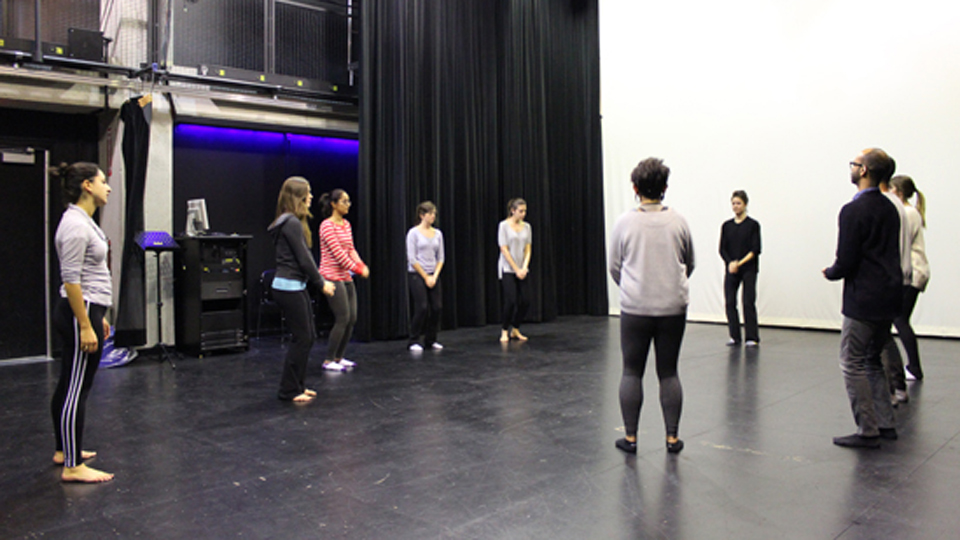“During my time at York University, I had to break up with dance for several years. I loved it so much, but we needed time apart. I’m glad to say that now we’re becoming friends again.”
This is a statement from Brendan Fernandes, a gifted artist who led a workshop entitled “The Writing Dance” at UTM this past Wednesday. The interactive workshop was hosted with the help of talented dancer and collaborative artist Colleen Snell.
Fernandes and Snell worked together on the recent Nuit Blanche piece “Night Shift”. “Night Shift” was a 13-hour performance inspired by Louis the XIV (The Sun King)’s court ballets. In this contemporary dance, the dancers worked from the dark evening hours until dawn, creating gold confetti piles and moving them around collectively to summon the sun.
Fernandes is a multidisciplinary artist who splits his time between Toronto and New York. He is of Indian descent and was born in Kenya, and moved to Canada in 1989. Fernandes has exhibited works in a variety of spaces including the Andy Warhol Museum, the Bergen Kunsthall, and the National Gallery of Canada. His works tend to examine issues of cultural displacement by experiences of embodiment through installations, video, sculpture, and dance, especially. Fernandes served as the Blackwood Gallery’s artist-in-residence for the last two weeks of October.
As Fernandes led us through the workshop, he brought our attention to developing a language or notation of dance. How do we write dance? How do you describe bodily movements so they be interpreted again the same way? Is there a way to create a language for dance?
Attendees followed the artists in a few writing exercises and immediately shared their experiences and input with the group. We looked at stills of dancers in motion and tried to jot down any words that came to mind to describe them. The diverse backgrounds of workshop participants were evident from their differing word choices and understanding of physical movements and positions. In attendance were artists, linguists, and writers—all offered unique responses to Fernandes’ activity. Next, participants watched and responded to a performance by Snell, who led a physical workshop. I enjoyed the entire process of translating our own words into movement and choreography; it was interesting to explore how language can be translated into movement and vice versa.
If you missed this opportunity to work with Brendan Fernandes and are curious about his work, you can check out his contribution to the exhibition Red, Green, Blue ≠ White, which is on display at the Blackwood Gallery until December 1. Fernandes’ work is bound to spark new ideas and feelings about dance and how we share our experiences of physical movement.

